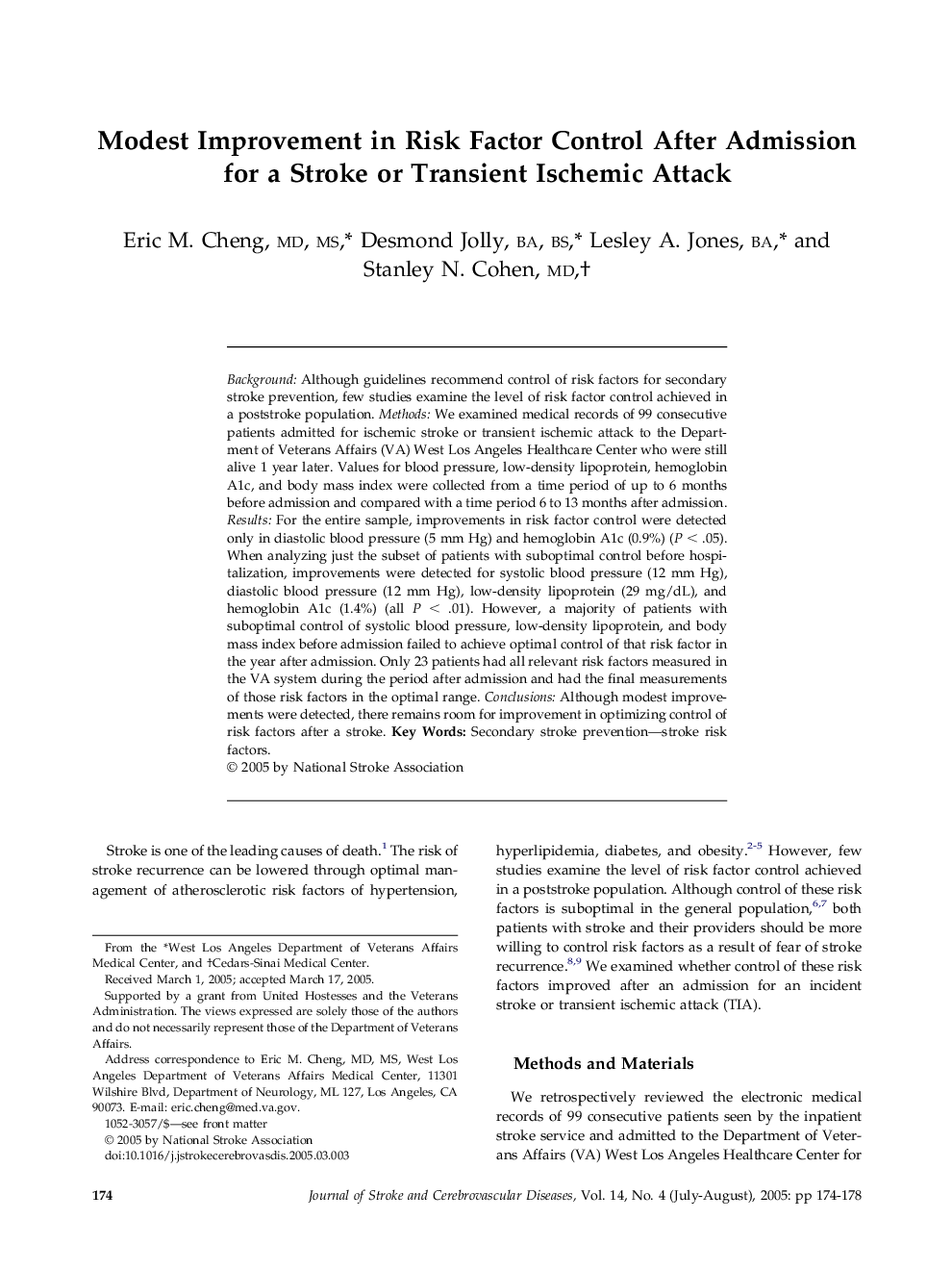| Article ID | Journal | Published Year | Pages | File Type |
|---|---|---|---|---|
| 9076949 | Journal of Stroke and Cerebrovascular Diseases | 2005 | 5 Pages |
Abstract
Background: Although guidelines recommend control of risk factors for secondary stroke prevention, few studies examine the level of risk factor control achieved in a poststroke population. Methods: We examined medical records of 99 consecutive patients admitted for ischemic stroke or transient ischemic attack to the Department of Veterans Affairs (VA) West Los Angeles Healthcare Center who were still alive 1 year later. Values for blood pressure, low-density lipoprotein, hemoglobin A1c, and body mass index were collected from a time period of up to 6 months before admission and compared with a time period 6 to 13 months after admission. Results: For the entire sample, improvements in risk factor control were detected only in diastolic blood pressure (5 mm Hg) and hemoglobin A1c (0.9%) (P < .05). When analyzing just the subset of patients with suboptimal control before hospitalization, improvements were detected for systolic blood pressure (12 mm Hg), diastolic blood pressure (12 mm Hg), low-density lipoprotein (29 mg/dL), and hemoglobin A1c (1.4%) (all P < .01). However, a majority of patients with suboptimal control of systolic blood pressure, low-density lipoprotein, and body mass index before admission failed to achieve optimal control of that risk factor in the year after admission. Only 23 patients had all relevant risk factors measured in the VA system during the period after admission and had the final measurements of those risk factors in the optimal range. Conclusions: Although modest improvements were detected, there remains room for improvement in optimizing control of risk factors after a stroke.
Related Topics
Health Sciences
Medicine and Dentistry
Clinical Neurology
Authors
Eric M. MD, MS, Desmond BA, BS, Lesley A. BA, Stanley N. MD,
